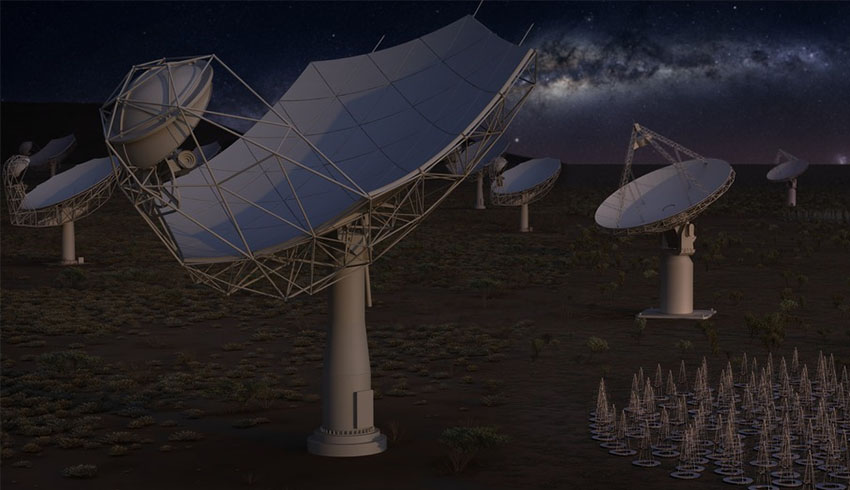This will be many times more sensitive than other smaller radio telescopes, able to detect signals in a broad range of radio frequencies from across the universe.
The SKA is an international project consisting of thousands of antennas across the world but with central cores of operation in South Africa and in Western Australia.
By combining signals from the large number of small antennae, SKA is in effect a single giant radio telescope capable of extremely high sensitivity and angular resolution, giving it the ability to determine where a signal originates.
SKA will feature a total collecting area of approximately a square kilometre, which will make it 50 times more sensitive than any existing radio telescopes, allowing astronomers to survey vast areas of the sky in parallel for the first time.
Announcing the $7.5 million funding which will be delivered if Labor wins the election, shadow minister for innovation, industry, science and research Kim Carr said this was an immense technical endeavour.
“It will involve not only 130,000 antennas over 800 square kilometres, but new data and power infrastructure, capable of processing immense volumes of data each second," he said.
The funding will be provided to the CSIRO and Pawsey Supercomputing Centre at Curtin University and be used to boost SKA capability and for construction costs.
It will also go towards developing a data science for the SKA strategy and a skills and workforce plan, along with the recruitment of additional data scientists at the Pawsey Centre.
Construction is set to start next year. In Australia, the core site will be at the Murchison Radio-astronomy Observatory at Mileura Station near Boolardy in WA. That will host the low frequency band component of SKA. It will be operated by the CSIRO.
SKA-Low in Australia will feature 130,000 individual antennae plus new data and power infrastructure to process huge amounts of data each second.
Senator Carr said the funding would help ensure scientists would have the skills and capabilities needed to analyse the data from what will be the world’s largest and most advanced telescope.
He said the coalition government had “dilly dallied” on support for the SKA, which Labor would end.
"This investment is a classic example of Labor’s 21st century innovation policy where white coat meets blue collar, with the best scientific advice translating into quality blue collar jobs," he said.
"Unlike the Liberals, Labor understands that to create good jobs and keep pace with technological change, Australia must remain globally competitive and build the industrial structure of the 21st century."
The SKA project received $294 million in federal funding as part of the National Innovation and Science Agenda in late 2015. Labor said their SKA funding would bring total pledged funding for the Australian space sector to nearly $80 million.

